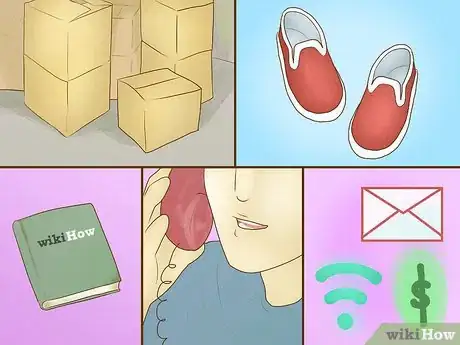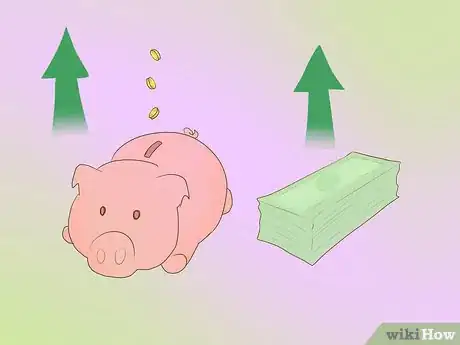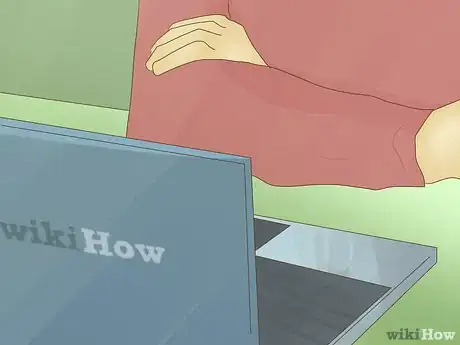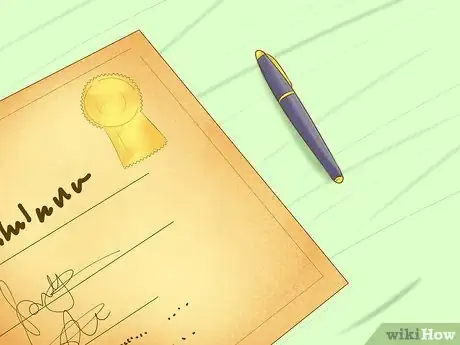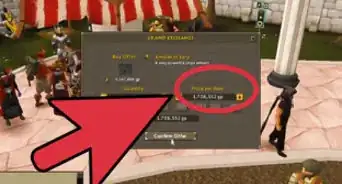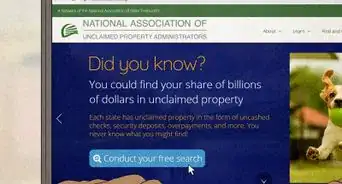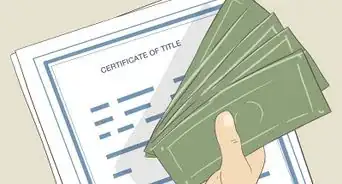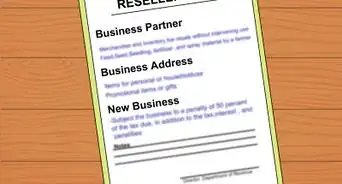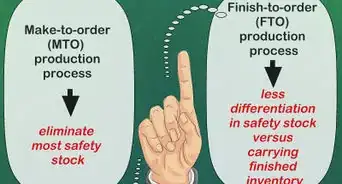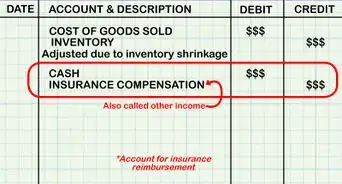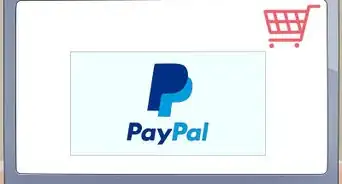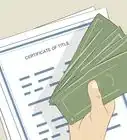wikiHow is a “wiki,” similar to Wikipedia, which means that many of our articles are co-written by multiple authors. To create this article, 28 people, some anonymous, worked to edit and improve it over time.
There are 11 references cited in this article, which can be found at the bottom of the page.
This article has been viewed 151,563 times.
Learn more...
Becoming a wholesaler is a great way to make money from home. Whether you're wanting to supplement your current income by making a little extra cash, or become a wholesaler as your full time job, there are a variety of business types you can get involved in. You will need good salesmanship and business skills to secure good deals from suppliers and good prices from buyers.
Steps
Deciding on Your Business
-
1Decide what you want to sell. The name of the game for a wholesale dealer is buying large quantities of goods for a relatively low per unit cost, and then selling them on in smaller quantities at a mark-up price. For this to be successful you need to buy things that will retain their value and enable you to sell them on for a profit. Do some thorough market research to see which types of goods are suitable for your business.
- If you have specialist knowledge in a particular area, then use this to your advantage. If you have experience of working in a particular industry this could be a significant advantage.
- A large part of what makes a good wholesaler is good salesmanship. If you believe in the products you are selling you are more likely to be a convincing seller.
-
2Consider what type of wholesale business you will run. There are a number of different types of wholesale business, so before you get too far down the road you need to be clear about the nature of the business you want to run. The most common type is just known as "General Wholesaler." A company that sells large quantities of goods from one or more suppliers, and sells them on in smaller amounts at higher per unit costs will typically be in this category. Other types of wholesale business include:
- Speciality wholesalers may have numerous suppliers and buyers, but will specialise in a particular industry or product line.
- Specific product wholesalers only buy and sell one particular product, for example, shoes.
- Discount wholesalers supply discounted goods, often because they are refurbished, discontinued or returned.
- Drop ship wholesalers are businesses which buy and sell goods like any other wholesaler, but without actually handling the goods. Instead, they have it dispatched straight from the supplier to the buyer.
- Online wholesalers are those businesses which are just based online and don't have a physical store. This can be a cheaper way to run the business, but limits the amount of stock you can handle.
Advertisement -
3Evaluate your finances. Once you have conducted market research and are developing a clearer picture of the type of wholesaler business you would like to develop, you need to appraise your financial situation. The kind of access to capital you have will have a large influence on the sort of business you can establish and maintain. You should be aware that a wholesale business can take two to five years before it begins to turn a substantial profit.[1]
- If you have limited funds at the start, consider beginning with a small online business and build up your knowledge and experience at the same time as building up some cash reserves.
- Once you have more available liquidity you can begin to expand your operations.
- Do not to try to expand beyond your finances. Going into debt to start a business adds additional risk to the business and should be avoided.
-
4Draw up a business plan. An essential element in every successful business is a thorough and well-considered business plan. You need to have one of these in place to firm up your strategic plan. You will also need to define the core values of your business and how you intend to operate. The plan should include an analysis of the existing marketplace as well as a full projection of how you want to develop your business.
Setting up Your Wholesale Business
-
1Develop your online presence. When you have planned out and researched your business and market it's time to develop your trading presence. Purchase a domain name and build a website that is attractive to both your prospective buyers and prospective suppliers. You can get a domain quite quickly and cheaply.
- Don't forget to develop a presence on social media as well and link up all your different online elements.
-
2Take care of the legal and regulatory requirements. Before you start actually trading you need be sure you have all the necessary legal permits and licenses. This means you have to secure a business license. This involves setting up your business as a legal entity as well as getting a Federal Tax Identification number (also known as an Employee Identification Number, or EIN). You can apply for an EIN online.[4] To register your business, visit the US Small Business Administration site.[5]
- You may need to obtain further licenses and comply to other regulations that are specific to your state. You can look up all the details for your locality online.[6]
-
3Understand different suppliers. If you want to start selling, you need to secure deals with reliable suppliers. This is an absolutely crucial aspect to your business, and how you you approach it will depend on the type of wholesale business you are developing. Be sure you understand the different types of suppliers.
- The four main groups of suppliers are comprised of manufacturers, independent craftspeople, import sources, and distributors.
- Distributors are often other wholesalers who buy from a variety of sources and sell on for a profit.[7]
- Take time to fully research suppliers and understand how they operate, who they already supply to, and in what sort of quantities.
-
4Evaluate suppliers. Once you have a clear picture of what suppliers are out there, you need to try to match suppliers to your business. You need to think about more than just the price you are being offered by the supplier. The cost of doing business with a company is more than just the price; you should figure in reliability and speed of order fulfillment, as well as the quality of the goods themselves.[8] These can be hard to determine at first, so look for testimonies from other firms and a record of good business practice.
- Other factors to consider include the location of the company. If they are a manufacturer based abroad you are adding an extra layer of potential costs with shipping as well as the extra time goods may take to arrive.
- Extra costs may be negated by lower purchase prices, but be sure to take all of these factors into careful consideration.
-
5Obtain physical premises if necessary. Depending on what type of wholesalers you are operating, you may need to have a physical site that processes orders and stores inventory. If you are starting small, you can probably run a wholesale business from your basement or garage. One way to lower your overheads is to run the business from home and thus cut out costs for rent and rates.
Boosting Your Profits
-
1Improve your marketing. Once you are a going concern, you should consider what steps you can take to boost your profits and make more money from your wholesale business. The first thing to think about is how you can increase your sales by improving your marketing. This isn't just a case of increasing your visible presence and promoting your business through social media, although you should be doing these things.[9] You should think of ways to improve your offer to customers and communicate more clearly.
- Consider focusing on one product at a time and developing specific promotional campaigns for specific product lines.[10]
- If you are selling to other businesses, ensure you are involved in good business-to-business (or B2B) networks and portals. There are numerous forums and registries to which you can sign up and increase your presence in business circles.[11]
-
2Adjust your pricing strategy. Changing your pricing strategy can have a significant impact on your margins. You can encourage larger orders from customers by introducing tiered pricing. This is particularly relevant if you are selling to retailers or other businesses rather than to individual customers.[12] Take time to carefully figure out a good pricing approach for your business. A tiered pricing strategy could look like this:
- If the buyer purchases 100 units of Product A, the cost is $10 per unit.
- If the buyer purchases 50 units of Product A, the cost is $12 per unit.
- If the buyer purchases 10 units of Product A, the cost is $15 per unit.
-
3Consider drop shipping to streamline your business. One way to increase your profits is to decrease your costs of doing business. An increasingly popular way to run a wholesale business is by drop shipping. If you do this you can very low costs as at no point are you actually handling the goods.
- You take the sale and pass it on to the supplier who then ships the products. This can be a way into a market that requires relatively little initial funding.[13]
- Although your costs will be lower, so will the margin on each unit. Do plenty of research and contact suppliers about the prices in order to determine the returns you can generate.
-
4Change your suppliers. If you feel like you could get a better deal from different suppliers, or you are finding juggling multiple suppliers too difficult, you can consider limiting the number of suppliers you do business with. Having closer more developed relationships with a smaller number of suppliers can improve efficiency, lower costs and save time.
- Consider a supplier's reliability, overall cost (not just unit price), and their willingness to develop a strong partnership with you.
- Also think about whether this supplier is developing their product line and business practices. If they seem slow or out of date, they may be failing to adapt and develop within their industry.[14]
-
5Making new deals with suppliers. As well as looking for new deals with new suppliers, you should always investigate the potential to improve the terms of your deal with your existing suppliers. This doesn't necessarily mean renegotiating any contracts, but rather inquiring about available discounts, special offers, and lower rates for larger orders. Businesses that sell to other business are often much more flexible about pricing than a retail business would be.
- If you have a long relationship with a supplier you may be able to get a considerable discount on the costs of your order.
- If you order over a certain amount a discount could kick in and save you money.
- Speak with a contact at the supplier to be sure you know about all the possibilities to lower your purchase costs.[15]
Community Q&A
-
QuestionHow can I begin selling products online?
 Community AnswerA good place to start is eBay, but if you would like a safer option, buy a domain name and set up your own website.
Community AnswerA good place to start is eBay, but if you would like a safer option, buy a domain name and set up your own website. -
QuestionHow much do wholesalers actually pay for custom wheels versus retail prices?
 Community AnswerIt depends on the store and the individual product.
Community AnswerIt depends on the store and the individual product. -
QuestionHow do I turn stagnant merchandise into cash flow for the business?
 Community AnswerYou could try selling it online on sites like Ebay, or even on your own website.
Community AnswerYou could try selling it online on sites like Ebay, or even on your own website.
Warnings
- You might be able to purchase a wholesale license online for a cheaper price than the city offers, but beware of scammers.⧼thumbs_response⧽
References
- ↑ http://www.entrepreneur.com/article/190460
- ↑ http://www.bplans.com/wholesale_food_business_plan/executive_summary_fc.php
- ↑ http://www.bplans.com/wholesale_and_distributor_business_plan_templates.php
- ↑ https://www.irs.gov/businesses/small-businesses-self-employed/apply-for-an-employer-identification-number-ein-online
- ↑ https://www.sba.gov/category/navigation-structure/starting-managing-business/starting-business/choose-register-your-busi
- ↑ https://www.sba.gov/content/what-state-licenses-and-permits-does-your-business-need
- ↑ http://www.entrepreneur.com/article/66028
- ↑ http://www.entrepreneur.com/article/66028
- ↑ http://www.opportunitiesplanet.com/business/wholesale-business-marketing-strategies/
- ↑ http://www.businessknowhow.com/marketing/5tipstoinc.htm
- ↑ http://www.opportunitiesplanet.com/business/wholesale-business-marketing-strategies/
- ↑ https://www.shopify.com/guides/make-your-first-ecommerce-sale/selling-wholesale
- ↑ http://www.shopify.com/blog/6492023-drop-shipping-the-easiest-way-to-sell-online
- ↑ http://www.entrepreneur.com/article/66028
- ↑ http://www.entrepreneur.com/article/66028
About This Article
To make money as a wholesaler, develop unique campaigns for each product line you sell so you can target a narrow, specific audience. For example, run an ad for a specific product line in a relevant business trade association’s newsletter so you can reach potential customers. During this growth phase, it’s also important to evaluate your relationship with your suppliers to determine if they are charging too much or failing to quickly fulfill orders. If their inefficiency or high prices are impacting your bottom line, either renegotiate your contract or look for better deals from other suppliers. To learn more, including how to take care of legal and regulatory requirements when setting up a wholesale business, read on!

